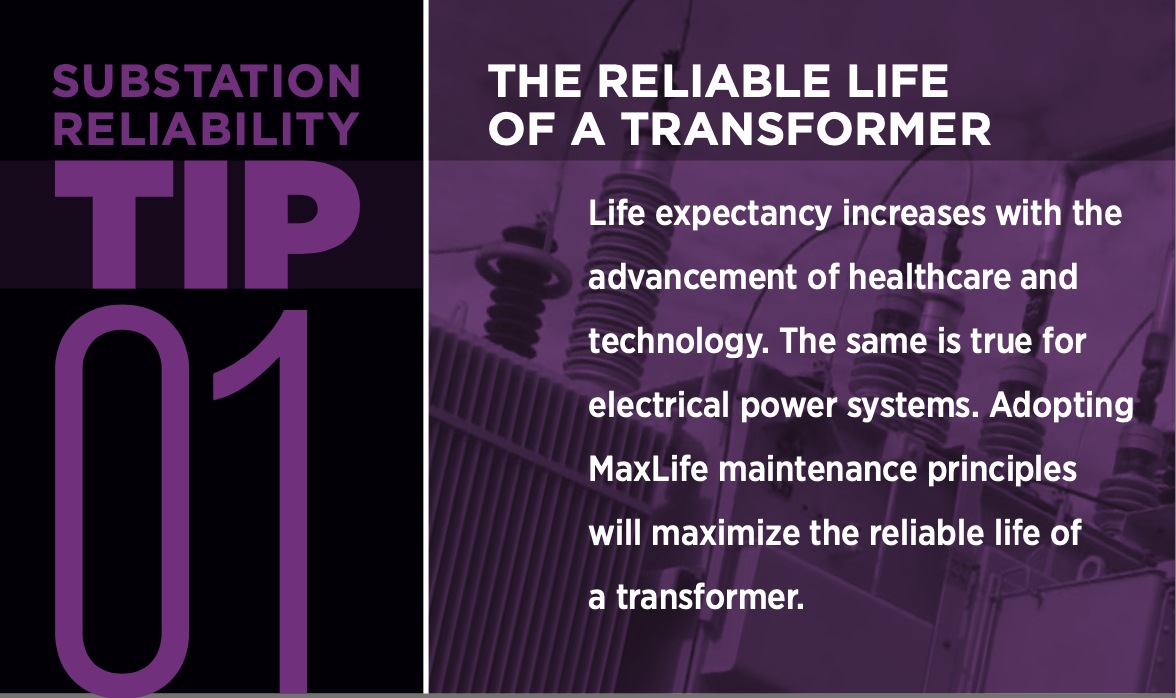
SUBSTATION RELIABILITY TIP #01
The Reliable Life of a Transformer
Adopting MaxLife maintenance principles will maximize the reliable life of a transformer.
Maximizing an electrical power system's health and reliability starts at the system's heart—the transformer. And a healthy transformer is one that is optimized to reach its maximum reliable life. This is achieved through the execution of a long-term strategy based on standards, testing, and best practices. This is what we at SDMyers call having a MaxLife Philosophy.
The MaxLife Philosophy focuses on optimizing transformer lifecycle management. It’s about creating benchmarks that exceed expectations and surpass industry standards. From the first oil test to ongoing testing, monitoring, servicing, inspecting, and maintenance best practices, everything is focused on maximizing the reliable life of the transformer.
A well-maintained and serviced transformer can last over half a century—humming and supplying all the uninterrupted power you need. That comes from adopting a MaxLife Philosophy. With that in place, we have vital knowledge about the condition of our equipment, which leads to wise decision-making to provide a low-cost, reliable electric power system.
Origins of MaxLife
The origins of the MaxLife Philosophy are found in the story of Stanley D. Myers and the founding of SDmyers. From the beginning in 1967, Stanley D. Myers led the way in valuing the ideas of stewardship, responsibility, and technical excellence when it comes to maximizing the life of a transformer. His goal was to help customers spend the least in the short-term to get the maximum long-term value possible for their electrical power equipment. As a pioneer in the industry, SDMyers established much of what we have today regarding transformer maintenance, testing, and lifecycle management.




 Please wait while logging in.
Please wait while logging in.